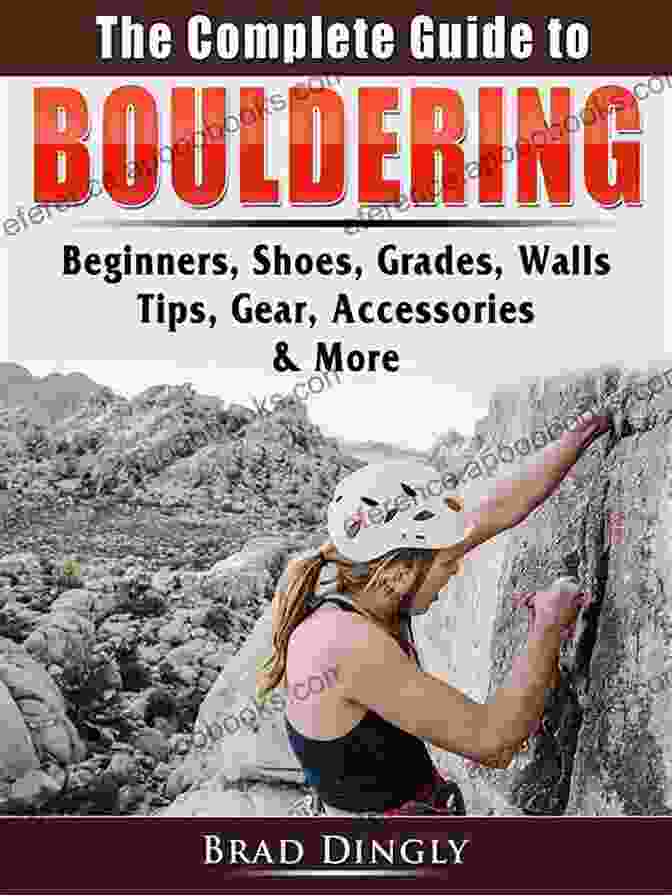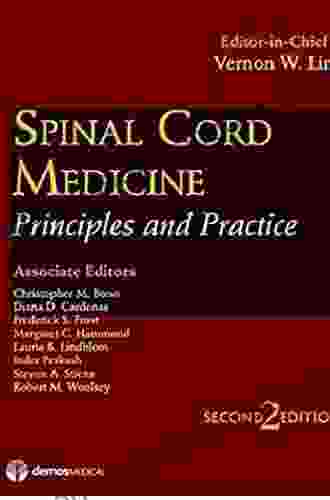The Complete Ultimate Guide To Bouldering For Beginners

5 out of 5
| Language | : | English |
| File size | : | 3836 KB |
| Text-to-Speech | : | Enabled |
| Print length | : | 24 pages |
| Screen Reader | : | Supported |

Table of Contents
- What is Bouldering?
- Benefits of Bouldering
- Getting Started: Gear and Safety
- Basic Climbing Techniques
- Problem Solving and Movement
- Training and Progression
- Indoor and Outdoor Bouldering
Section 1: What is Bouldering?
Bouldering is a form of rock climbing that involves climbing short, low-level rock formations called boulders. Unlike traditional rock climbing, bouldering does not require ropes or harnesses, making it an accessible and exciting to the sport. It emphasizes problem-solving, movement, and body control, and is suitable for climbers of all ages and abilities.
Section 2: Benefits of Bouldering
Bouldering offers numerous physical, mental, and social benefits:
- Improved fitness: Bouldering engages multiple muscle groups, including arms, legs, core, and back, enhancing overall strength and endurance.
- Enhanced coordination and balance: Climbing requires precise movements, coordination, and balance, improving these skills both on and off the wall.
- Increased confidence: Completing a challenging boulder problem can boost self-esteem and confidence, both in climbing and other areas of life.
- Stress relief: The physical and mental challenges of bouldering offer a great way to relieve stress and improve mood.
- Social opportunities: Bouldering gyms and outdoor areas provide opportunities to connect with other climbers, fostering a sense of community.
Section 3: Getting Started: Gear and Safety
Bouldering requires minimal gear, but it is important to ensure safety:
Essential Gear:
- Climbing shoes: Designed specifically for bouldering, providing grip and support on the rock.
- Chalk bag: Contains powdered chalk to keep hands dry and enhance grip.
- Crash pad: A large, padded mat that protects climbers if they fall from a boulder.
Safety Precautions:
- Climb within your skill level: Don't attempt boulders that are too challenging or dangerous.
- Spotting: Have a partner or friend spot you when attempting difficult moves to guide you and cushion any falls.
- Warm up: Stretch and warm up your muscles before climbing to prevent injuries.
- Be aware of your surroundings: Check for loose rocks, vegetation, or other hazards before climbing.
Section 4: Basic Climbing Techniques
Master the following techniques to climb boulders effectively:
Footwork:
- Toe hook: Using the toe of your shoe to hook around a small ledge or hold for stability.
- Heel hook: Similar to a toe hook, but using the heel of your shoe to secure a hold.
- Smear: Using the sole of your shoe to apply pressure on smooth or sloping surfaces.
Handholds:
- Crimp: Holding a small edge with your fingertips for maximum precision.
- Open hand: Gripping a larger hold with your palm and fingers spread wide for stability.
- Gaston: Using the thumb on the opposite side of the hand to grip a hold from below.
Section 5: Problem Solving and Movement
Bouldering challenges your problem-solving skills and body movement:
Reading the Boulder:
- Inspect the rock: Identify potential holds, ledges, and cracks that you can use to climb.
- Plan your route: Visualize the sequence of moves you will make to reach the top.
- Rest and recover: Take breaks as needed to catch your breath and regain energy.
Dynamic Moves:
- Jumping: Use jumping to reach higher holds or gain momentum for dynamic moves.
- Traversing: Moving sideways along the boulder, searching for holds and footholds.
- Manteling: Hoisting yourself up over an obstacle or onto a higher surface.
Section 6: Training and Progression
To improve your bouldering skills, focus on:
Strength Training:
- Pull-ups: Enhance upper body strength for climbing vertical walls.
- Planks: Develop core strength for stability and balance.
- Fingerboarding: Strengthen the fingers and forearms for gripping holds.
Technique Refinement:
- Practice basic techniques: Focus on developing proper footwork, handholds, and body movements.
- Challenge yourself: Gradually tackle harder boulders to push your limits and improve skills.
- Get feedback: Ask experienced climbers or instructors for tips and advice to improve your technique.
Section 7: Indoor and Outdoor Bouldering
Bouldering can be enjoyed both indoors and outdoors:
Indoor Bouldering:
- Convenience: Accessible year-round, regardless of weather conditions.
- Controlled environment: Safe and controlled setting, with designated bouldering areas.
- Social atmosphere: Often has a community feel, with climbers sharing tips and encouragement.
Outdoor Bouldering:
- Natural setting: Climb on real rock formations, surrounded by nature.
- Variety of challenges: Outdoor boulders offer a wide range of difficulties and styles.
- Adventure and exploration: Discovering and exploring new bouldering areas can be an exciting adventure.
The Complete Ultimate Guide To Bouldering For Beginners provides a comprehensive to this exhilarating sport. Whether you are new to climbing or looking to take your skills to the next level, this guide will empower you with the knowledge and techniques you need to conquer boulders and enjoy the numerous benefits of bouldering. Embrace the challenge, unlock your potential, and discover the world of climbing today!
5 out of 5
| Language | : | English |
| File size | : | 3836 KB |
| Text-to-Speech | : | Enabled |
| Print length | : | 24 pages |
| Screen Reader | : | Supported |
Do you want to contribute by writing guest posts on this blog?
Please contact us and send us a resume of previous articles that you have written.
 Book
Book Novel
Novel Page
Page Chapter
Chapter Text
Text Story
Story Genre
Genre Reader
Reader Library
Library Paperback
Paperback E-book
E-book Magazine
Magazine Newspaper
Newspaper Paragraph
Paragraph Sentence
Sentence Bookmark
Bookmark Shelf
Shelf Glossary
Glossary Bibliography
Bibliography Foreword
Foreword Preface
Preface Synopsis
Synopsis Annotation
Annotation Footnote
Footnote Manuscript
Manuscript Scroll
Scroll Codex
Codex Tome
Tome Bestseller
Bestseller Classics
Classics Library card
Library card Narrative
Narrative Biography
Biography Autobiography
Autobiography Memoir
Memoir Reference
Reference Encyclopedia
Encyclopedia Adam Parfrey
Adam Parfrey Connie Ann Valenti
Connie Ann Valenti Charles Yu
Charles Yu Alexander Mauskop
Alexander Mauskop Deanna Swaim
Deanna Swaim Spencer J Sadler
Spencer J Sadler Hermann Abert
Hermann Abert Adele Bates
Adele Bates George Creel
George Creel Tony Sharp
Tony Sharp Randi Kreger
Randi Kreger Diana C Mutz
Diana C Mutz Miriam B Larson
Miriam B Larson G Stuart Smith
G Stuart Smith Adam Higginbotham
Adam Higginbotham Carlina Duan
Carlina Duan Angela King
Angela King Geoff Hulten
Geoff Hulten Keeanga Yamahtta Taylor
Keeanga Yamahtta Taylor Colin Durrant
Colin Durrant
Light bulbAdvertise smarter! Our strategic ad space ensures maximum exposure. Reserve your spot today!
 Henry GreenFollow ·3.5k
Henry GreenFollow ·3.5k Frank MitchellFollow ·9.8k
Frank MitchellFollow ·9.8k Douglas PowellFollow ·19.4k
Douglas PowellFollow ·19.4k Darren NelsonFollow ·13.1k
Darren NelsonFollow ·13.1k Henry HayesFollow ·17k
Henry HayesFollow ·17k Sammy PowellFollow ·16.7k
Sammy PowellFollow ·16.7k Jamie BlairFollow ·4.1k
Jamie BlairFollow ·4.1k Jerry WardFollow ·18.5k
Jerry WardFollow ·18.5k

 Justin Bell
Justin BellUnlock National Biology Success: The Ultimate Guide to...
Mastering the Fundamentals: A Comprehensive...
 Luke Blair
Luke BlairAC/DC: The Early Years with Bon Scott – A Thunderstruck...
In the annals of rock and roll history, few...

 Darren Nelson
Darren NelsonSpinal Cord Medicine Second Edition: The Comprehensive...
The second edition of Spinal Cord Medicine...

 Cole Powell
Cole PowellArabian Horse Training: Unlock the Secrets for a...
Indulge in the captivating world of Arabian...

 Oscar Wilde
Oscar WildeRevise Curriculum For Excellence SQA Exams: The Ultimate...
The Scottish...

 David Peterson
David PetersonEndoscopic Ear Surgery: A Comprehensive Guide for...
Endoscopic Ear...
5 out of 5
| Language | : | English |
| File size | : | 3836 KB |
| Text-to-Speech | : | Enabled |
| Print length | : | 24 pages |
| Screen Reader | : | Supported |












